China’s ambitious mission to Mars, Tianwen 1, has arrived at the Red Planet and will attempt to land a rover on the surface in May.
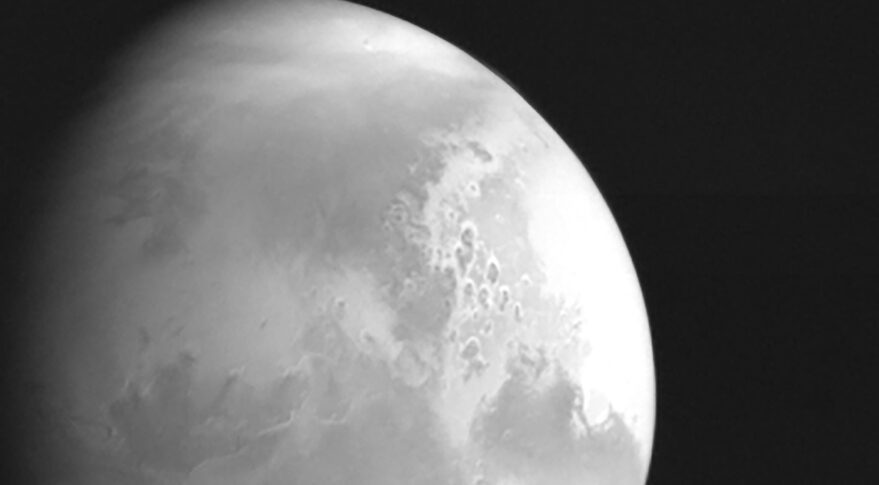
CNSA / PEC
...and now there are two. The second 2021 arrival at Mars occurred this week, as China’s aspiring Tianwen 1 (meaning ‘questions to the heavens’ in Chinese) burned its thrusters for 15 minutes, entering an initial capture orbit around the Red Planet.
The engine burn commenced at 6:52 a.m. EST (11:52 UT) on Wednesday, February 10th, and the China National Space Administration (CNSA) mission control received the spacecraft's signal of success 11 minutes later.
The European Space Agency assisted China with tracking Tianwen 1 on Wednesday as it emerged from behind Mars and phoned home.
“We will cooperate sincerely and go hand in hand with countries all over the world to make mankind’s exploration of space go further,” says Zhang Kejian (CNSA Director) in a brief press release. “On the occasion of the New Year holiday, on behalf of the first Mars exploration mission engineering headquarters, I would like to extend Chinese New Year blessings to all the participants in the research.” (Chinese New Year celebrations begin on Friday, February 12th.)
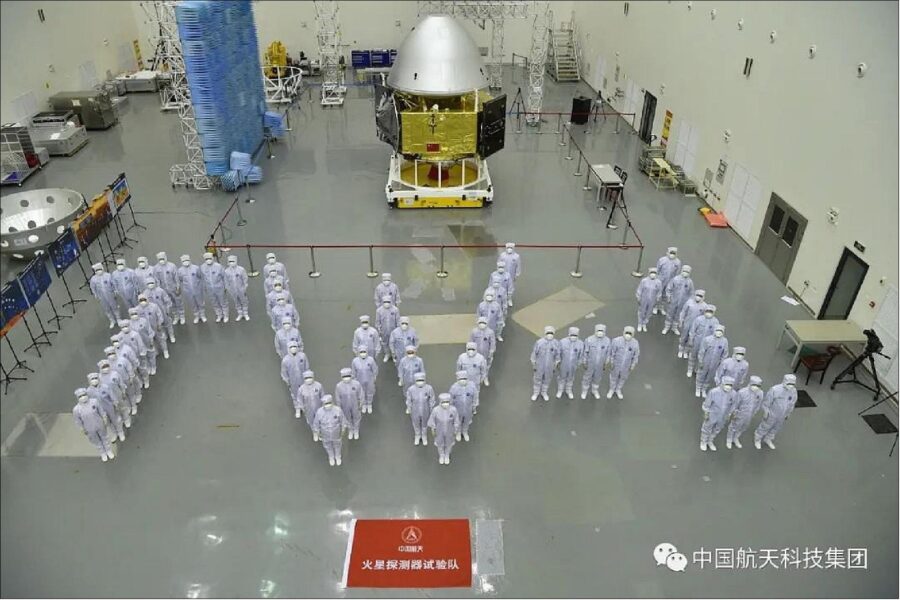
CNSA
The arrival makes China the sixth national space agency to successfully field a mission to Mars, behind the United States, the Soviet Union, the European Space Agency, India and — just a day earlier this week — the United Arab Emirates, with the arrival of its Hope orbiter. Japan’s Nozomi mission failed to enter Mars orbit in 2003, and Russia has yet to successfully return to Mars since the dissolution of the Soviet Union in 1991. Tianwen 1 is a 5-ton, all-in-one, orbiter/lander/rover package — a first for any Mars mission.
Now, Tianwen 1 is in a 10-day, 400- by 180,000-kilometer orbit (250 miles by 112,000 miles) inclined 10° relative to the Martian equator. Several additional engine burns over the next few weeks will circularize its orbit, eventually bringing the spacecraft to a periapsis (closest approach) of 265 km above the Martian surface. Tianwen 1 could release its lander and rover as early as this coming May. They will target a landing site in Utopia Planitia, the same general region where NASA’s Viking 2 mission landed in 1976.
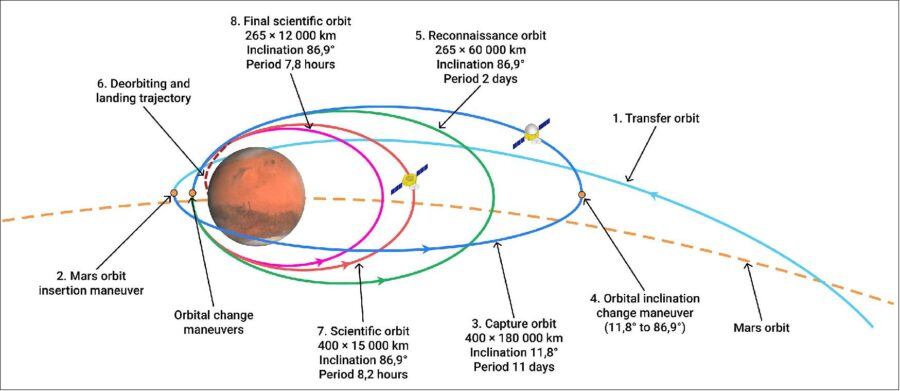
Wikimedia Commons / CC BY-SA 4.0
The 240-kilogram (530-pound) solar-powered rover is expected to last 90 days, while the orbiter should operate for one Martian year, or 687 Earth days.
Tianwen 1 has 13 scientific payloads aboard the orbiter and rover that are designed to map water ice across the Martian surface and study the planet's tenuous atmosphere and magnetic environment. Sounding radar on the orbiter will probe the surface on a large scale, while the surface-penetrating radar on the rover will make a "ground truth" measurement at the landing site, extend about 100 meters (330 feet) below the surface.
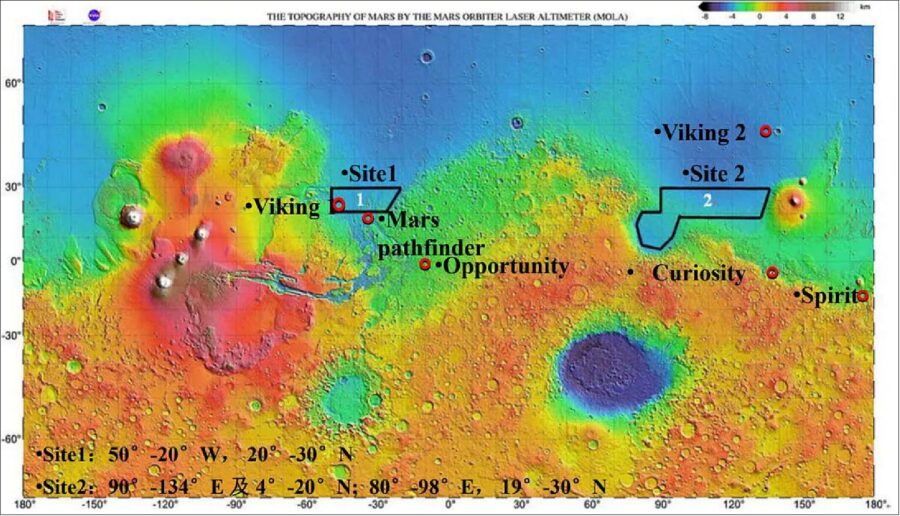
CNSA
Launched from Wenchang Space Center in China last summer atop a Long March 5 heavy lift rocket on July 23, 2020, Tianwen 1 is one of three missions that took advantage of the biannual Mars launch window in 2020. En route to Mars, Tianwen 1 ejected a small camera satellite, which took a ‘deep space selfie’:
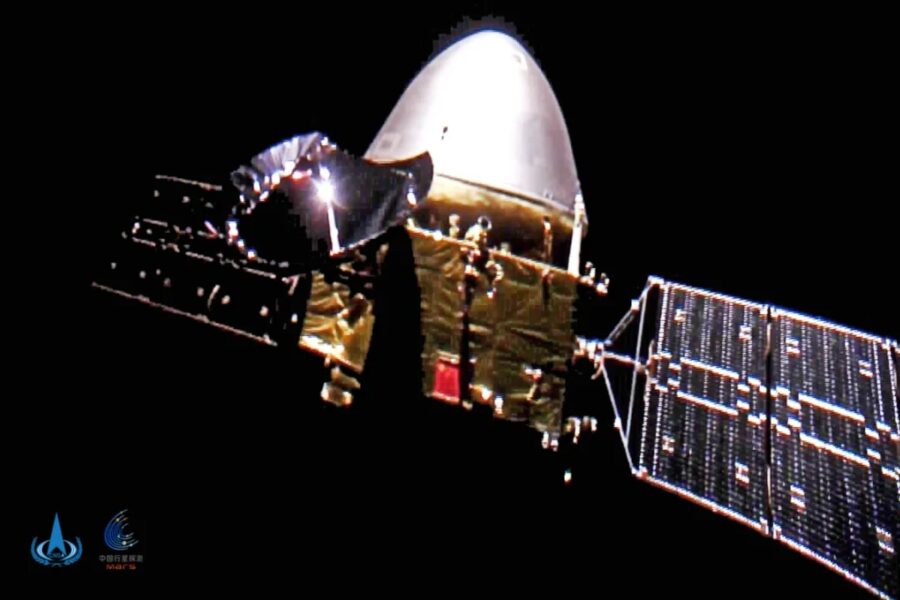
CNSA
The other missions are the United Arab Emirates’ Hope probe, which also entered orbit this week, and NASA’s Perseverance rover, which will come in for a sky-hook landing next week on February 18h. A fourth mission, a joint effort between the European Space Agency and Russia's Roscosmos agency to fly the ExoMars Rosalind Franklin rover, has slipped back one launch window to 2022.
China has been busy in space as of late. Their latest success was the Chang'e 5 lunar sample return mission in late 2020. Information on just what China is doing in space tends to trickle out via short government press releases, state-run television, and secondary sources, to include ham radio operators worldwide and observers of the Chinese space program online. Follow journalist Andrew Jones (@AF_JI on Twitter) for updates.
The arrival of Tianwen 1 at Mars marks a major milestone for the Chinese space program and the second act on the stage of a busy ‘Mars season’ for 2021.
 0
0









Comments
You must be logged in to post a comment.